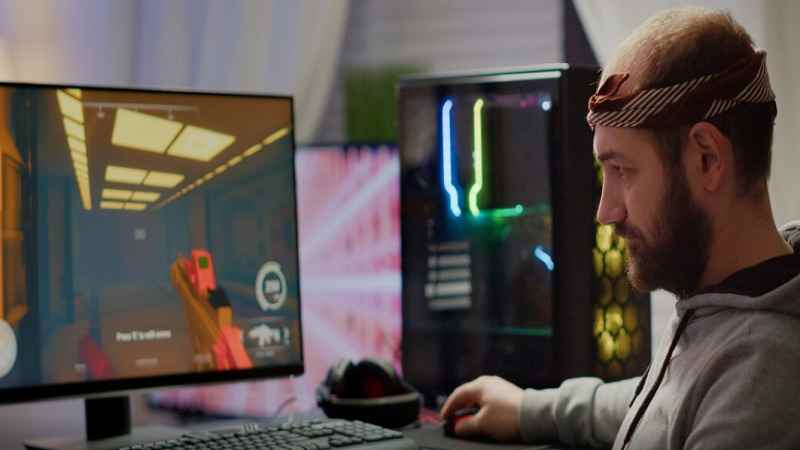Stability, security and open source have always been the hallmarks of Linux. However, for gamers, the platform has often been seen as a secondary choice compared to Windows. Tech PBLinuxGaming– a coalition of top-tier developers of Linux-based gaming technology combined with the best technology, in order to deliver, at every moment, an uninterrupted, high performance gaming experience. This article will guide you through practical steps to optimize your Linux system for gaming, ensuring you get the most out of your hardware and software.
Why Choose Linux for Gaming?
The Rise of Linux Gaming
Linux gaming has experienced a dramatic increase in popularity in recent years. Thanks to developments in compatibility-switcher technologies, e.g., Proton and Wine, there is an increasing number of Windows-only games which can boot up perfectly on Linux. Also, the increasing endorsement of both game developers and also Linux game releases has made the platform a viable choice for gamers.
Benefits of Linux Gaming
Cost-Effective: Linux is free, and therefore reduces the price of a Windows licence.
Customizability: Tailor your system to your exact needs.
Security: Linux is less prone to malware and viruses.
Performance: When properly configured, Linux can beat Windows in terms of gaming.
Getting Started with Tech PBLinuxGaming
Step 1: Choose the Right Linux Distribution
Not all Linux distributions are created equal when it comes to gaming. Here are some of the best options:
Ubuntu: User-friendly and widely supported.
Pop!_OS: Optimized for gaming and hardware compatibility.
Manjaro: Rolling release with access to the latest software.
Step 2: Install Essential Gaming Software
In order to begin, one must install the following necessary piece of software:.
Steam: The major gaming platform, with an ever-expanding collection of Linux-compatible games.
Lutris: A free software gaming platform for easy installation and exploitation of games.
Proton: A compatibility layer that enables playing Windows Video Game on Linux.
Step 3: Optimize Your System for Gaming
Update Your Drivers
Ensure you have the latest graphics drivers installed. This translates to NVIDIA users needing to install the vendor-specific drivers, and AMD users can leverage the free and open-source Mesa drivers.
Enable Game Mode
A number of Linux distributions provide a “Game Mode,” in which system resources are tailored to gaming. Enable this feature to reduce latency and improve performance.
Configure Swap Space
Fit your swap space so that performance stays smooth in the process of heavy gaming. As a general rule, swap space can be configured to be as much as twice the size of RAM.
Advanced Tips for Tech PBLinuxGaming
Step 4: Overclock Your Hardware
If you’re comfortable with advanced configurations, overclocking your CPU and GPU can yield significant performance gains. Tools such as CoreCtrl for AMD or GreenWithEnvy for NVIDIA can be used to coordinate overclocking parameters .
Step 5: Use a Lightweight Desktop Environment
A desktop environment with low weight can be released from system resources in favor of gaming. For a light touch, use Xfce, LXQt or i3.
Step 6: Monitor and Optimize Performance
Employ tools, such as MangoHud and GOverlay, to track the health of your system in real time. These tools can be used with you to detect bottlenecks, tune parameters for better game play.
Troubleshooting Common Issues
Game Crashes and Freezes
If you encounter crashes or freezes, try the following:
Update Your System: Make sure all your software and drivers are latest.
Check Compatibility: Employing ProtonDB to determine whether the game is Linux compatible.
Adjust Graphics Settings: Lowering graphics settings can often resolve performance issues.
Input Lag and Latency
Input lag can be a deal-breaker for competitive gaming. To reduce latency:
Use a Wired Connection: A wired mouse and keyboard can reduce input lag.
Enable Game Mode: As mentioned earlier, this can optimize system resources.
Disable VSync: VSync can introduce input lag, so consider disabling it if you’re experiencing issues.
Conclusion
Tech PBLinuxGaming is changing the paradigm of gaming on a Linux OS. By following the practical guide above, your Linux system can be turned into one of the best gaming systems. From choosing the right distribution to optimizing performance, every step brings you closer to a seamless and enjoyable gaming experience. So, why wait? Dive into the world of Linux gaming today and discover the endless possibilities that await you.
Additional Resources
ProtonDB: A community-driven database of game compatibility on Linux.
Lutris: An open-source gaming platform for Linux.
MangoHud: An OpenGL and Vulkan overlay for visualizing FPS, temperatures, and the like.
Enthusiasts for Tech PBLinuxGaming, are not just playing games, but becoming a part of a vibrant community whose priorities include freedom, performance, and innovation. Happy gaming!
